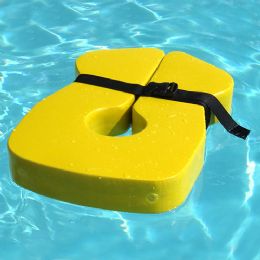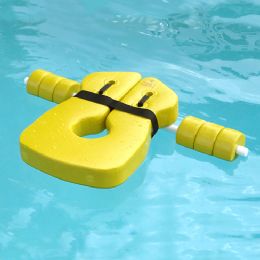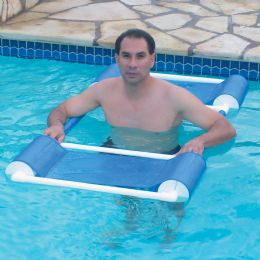




What is Pediatric Aquatic Therapy?
Also known as aquatic rehabilitation, aqua therapy, aquatic exercise, water therapy and pool therapy, aquatic therapy is the treatment of using the medium of water for relaxation, fitness, physical rehabilitation and other specific therapy goals. As a buoyant, controllable environment, water offers hydrostatic pressure, positively influencing lung and heart function as it stabilizes and supports the body. Thermal stability can be controlled by maintaining a desired pool temperature, while the natural buoyancy of water greatly reduces the negative effects of gravity and permits flotation. Gentle movement and manipulation is enhanced with water’s natural wave propagation and turbulence.
While aquatic therapy is often used for children in the same ways it is for adults, such as helping with the rehabilitation of weak muscles and the reeducation of skill development following neuromuscular and neurological impairment, neuromuscular and orthopedic injury or recovery from surgery, this therapy is also utilized for another vast range of specified pediatric developmental disorders and challenges.
With its natural transformation into a multisensory environment that can address a wide range of treatment applications including coordination development, sequencing and cognitive processes, memory development, vestibular feedback and proprioceptive feedback, a swimming pool is the perfect place for aquatic therapy. Therapists work side-by-side with children (active), or may have the child perform specific movements and exercise unassisted (passive). However, children are kept in constant supervision by their therapist throughout the entire session. Various props and equipment may be incorporated into the treatment sessions, and activities may include one or all of the senses.
Being in water adds a whole new dimension to the senses as it enhances movement flow but offers resistance at the same time. It is exciting and positively stimulating for children, while it can also be appropriated as a calming therapy, especially when combined with relaxing music and lower lighting effects. Children often forget they are involved in a working therapy session because therapists adapt activities to more appropriately suit younger levels of interest. The use of games, floating toys, sensory toys and specialized devices and equipment create a more delightful approach to accomplishing specific therapy goals.
What are the Benefits of Pediatric Aquatic Therapy?
Pediatric therapy patients are much different to deal with than their adult counterparts. Not only are they less likely to comply with requests to continue movements and exercises that are uncomfortable, but they also have shorter attention spans, or may be fearful of any medical personnel because of past negative experiences. Aquatic therapy can help children to become not only more compliant with their therapy tasks, but actually look forward to the sessions!
Aquatic therapy sessions incorporate specific movements and exercises that take place while fully submerged, partially submerged or while floating in the temperature-controlled water of the pool. Water therapy offers a number of different mental and physical health benefits, commonly focusing on restoring or improving the physical function affected by disability, injury or illness. Goals can include fitness, physical rehab, relaxation, neurological and cognitive development, sensory integration and post-operative orthopedic rehabilitation. Aquatic therapy is one of the best ways to mitigate pain and inflammation for a wide variety of conditions as well.
Specifically, aquatic therapy helps:
To enhance joint mobility and increase strength
To provide constant sensory stimulation with gentle movement and light pressure
To help children stretch easier (via a heated, temperature-controlled pool)
To encourage exercise, as weight-bearing exercises become much easier to perform in water
To lengthen and/or intensify exercise and therapy sessions, as the buoyancy allows for higher endurance
To augment learning and education
Pediatric Aquatic Therapy Equipment and Accessories
As the tools needed to help young users with a myriad of skill sets, aquatic therapy equipment encompass a broad range of products, accessories and devices. Physical, occupational and specific aquatic therapists optimize these water sessions with the help of specially designed tools that may include disposable swimsuits, kick boards, buoys, and other aquatic equipment. Floatation devices such as head rests, rings, belts and vests may be especially indicated for young users with head and trunk control disabilities.
Pediatric aquatic therapy equipment is comprised of orthotic, supportive, protective, adaptive and assistive devices to help accommodate the specific and specialized needs of each individual child. Underwater treadmills, underwater bikes, buoyant cuffs and weights, resistant bands, tubing and paddles, and safety platforms are just a few of the innovative aquatic therapy tools available to enhance any water therapy practice.
Rehabmart is delighted to offer a vast array of fun and functional pediatric aquatic therapy equipment and accessories from outstanding and well-known manufacturers that include Danmar, Konfidence USA, TherAdapt, MJM International, Aqua Creek, Sammons Preston and Fabrication Enterprises.
Hulet Smith, OT
Rehabmart Co-Founder & CEO
ck